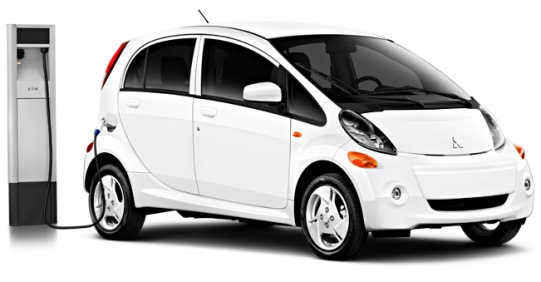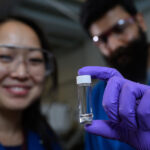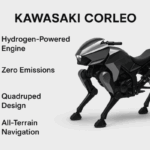According to Ward’s Auto there are more than 1 billion automobiles and light trucks on the road today with forecasts reaching 2.5 billion by mid-century. At current levels of consumption per vehicle 2.5 billion automobiles will translate to 150 million barrels of oil per day, compared to today’s 90 million barrels. The automobile and oil consumption are on an unsustainable course and that is leading to new energy conservation technology that may indeed prove a planet saver. Today the electric car is an oddity, but by 2050 alternative fuel and electric cars will be in the majority. This transformation is just one of many that will change transportation in the 21st century.
In Energy in the 21st Century – Part 7: From Biomass to Biofuels we talk about alternative energy sources that includes fuels such as ethanol, bio-diesel, natural gas, propane and hydrogen. The problem with ethanol and bio-diesel is two-fold:
- These fuels are largely obtained in North America from a food crop, corn. In South America, sugar cane is the primary source. With sugar cane there are environmental issues that contribute to rising CO2 levels in the atmosphere as well as issues related to soil degradation and destruction of rain forest habitat.
- These fuels require a significant amount of energy to create output and that includes the use of fossil fuels to make the end products.
Natural gas and propane are fossil fuels. Using these fuels doesn’t solve the problem of fossil fuel dependence.
A Hydrogen Transportation Alternative
Hydrogen is the most abundant element in the universe and on the planet but for us to make it we have to separate it from water or fossil fuels. Hydrogen is seen by environmentalists as the miracle solution to revolutionize transportation. But building capacity to produce it and an infrastructure to fuel automobiles and trucks means an enormous investment on the part of national governments and private enterprise. Today the energy required to deliver gasoline and diesel represents about 10% of the energy derived for automobile and truck usage. There is no political will at present in North America or Europe to create a system with similar or better efficiency to deliver hydrogen. Besides the challenge of infrastructure hydrogen has some other challenges:
- Hydrogen when not combined with other elements is highly inflammable. In water, H2O it is stable. By itself….not so much. Remember the Hindenburg?
- Hydrogen generates less energy output than fuels like gasoline or diesel. A kilogram (approximately 2.2 pounds) of hydrogen generates about the same amount of energy as a gallon of gasoline or 9/10s of a gallon of diesel.
- Because it delivers less energy punch than these other fuels by volume to maximize its efficiency it needs to be compressed or liquified. This means extra energy and production costs as well as the need to manufacture pressurized storage or cryogenic containers. Neither gasoline or diesel require compression and both are in a liquid state. Both can be stored in conventional fuel tanks.
- Hydrogen when derived from fossil fuels produces less energy than the energy needed to create it. This means conventional coal or natural gas power plants are economically unsuitable for generating hydrogen in volume.
- The economics of generating hydrogen using cleaner energy sources currently does not make sense because it is considerably more expensive to produce it by electrolysis than from fossil fuels. A 1997 study calculated the cost around $20.10 U.S. per Gigajoule (GJ, about 240,000 kilocalories equivalent) from electrolysis versus $5.60 per GJ from natural gas and $10.30 per GJ from coal.
- Storing and distribution of hydrogen requires a very different infrastructure than the current one constructed for gasoline and diesel. There are two ways hydrogen can be stored. One involves combining it with another material where it can bond and then be extracted later, or storing it as a compressed gas in its pure state. The former would make the hydrogen safer while the latter would entail reinforced containment. Distribution by trucking hydrogen to filling stations would require the building of containment vessels to withstand the compressed gas or maintain it at cold enough temperatures to keep it in a liquified state. Distribution through pipelines would require a higher frequency of pumps to move the gas along because of hydrogen’s very low density compared to natural gas.
- Hydrogen can be generated right at a filling station, a very different model than current gasoline and diesel infrastructure. Generating the gas this way would be energy intensive using current technologies, would require a rethinking of the power grid, and would present safety concerns for neighbouring communities.
- Hydrogen fuel cells have been around since the American space program first implemented them in the 1960s to power spacecraft and generate oxygen for the crew to breathe as a byproduct. But fuel cell technology has never scaled to a point where it was affordable for use in standard automobiles and trucks.
Hydrogen as an alternative to fossil fuels, therefore, has considerable challenges to overcome before it can displace our current dependence on gasoline and diesel as the fuels of choice for automobiles and trucks. Conservation gains are more than offset by the massive investment needed to develop the technology and infrastructure to make it practical.
Electric Vehicles
The Toyota Prius was the first commercial, mass-produced hybrid vehicle, combining an electric motor with an internal combustion engine. The Prius was not designed to operate purely using its electric motor. The Chevrolet Volt, however, combined an electric motor with a supplementary internal combustion engine making it possible to operate the automobile on electricity alone for short distances. In 2006, Tesla Motors launched the Roadster, an all-electric vehicle capable of driving close to 400 kilometers (245 miles) before its batteries needed recharging. The Roadster uses lithium-ion battery technology and is rechargeable through a conventional 110 volt or 220 volt circuit. Tesla has launched a second vehicle, a more conventional sedan using the same technology. Of the major automobile manufacturers Nissan is first to market with the Leaf, an all-electric vehicle.
Electric vehicles or EVs truly represent a significant technology paradigm shift. They offer lots of advantages including:
- Energy efficiency and performance benefits when compared to internal combustion engines. An EV converts 75% of the energy stored in batteries to power the vehicle. EVs are quiet, low maintenance, and high performance. Compare that to 20% using internal combustion engines with the noise that these engines create and the number of moving parts that can break.
- Better for the environment with no tailpipe emissions. The batteries have pollutants and need to be recycled appropriately at end of life. When charging an EV may take its power from any electrical source. If the source is coal-fired then the pro-environment argument is weakened.
- Reduced energy dependence because batteries are charged through the domestic power grid.
This advantages are largely related to the state of current portable storage technology and include:
- Batteries that take considerable amount of time to recharge. For example the Tesla Roadster takes a minimum of 4 hours to fully recharge using a 220 volt connector, or 6 hours using more conventional 110 volt connections. On a 15 amp, 120 volt circuit plugged into a conventional outlet it can take up to 30 hours to fully recharge the vehicle.
- Batteries that are expensive and need replacement as they lose their efficiency.
- Batteries are heavy and limit the carrying capacity and interior vehicle volume.
- Limited driving range before recharging. Currently the Leaf has a range of between 100 and 160 kilometres between charges. The Tesla Roadster has a range of up to 400 kilometers. Variability is determined by passenger load, weather and temperature, driving style and speed.
With all these limitations, EVs are still proving an attractive alternative to hydrogen and other fuel technologies with more and more automobile and truck manufacturers in the planning or delivery stage of bringing them to the market. By 2020 EVs will represent about 3% of the total market. But as the cost of fossil fuel technologies increases EVs should rapidly build market share and predominate by mid-century.
Some EVs will use hydrogen fuel cells. Most will be plug-in battery driven and hybrids will be only a small percentage of the automobile market but will play a more significant role in heavy truck market where the technology will deliver conservation along with long distance performance.










Researchers at Penn State are trying to scale a technology they have developed in the laboratory that could lead to the industrial production of hydrogen. The technology combines bacteria, seawater and fresh water. In 2009, researchers at the university discovered that microbial electrolysis cells could break down matter in wastewater to release hydrogen. To get the process started all that was needed was a small electrical charge. Using a reverse desalinization process, called reverse-electrodialysis, they were able to release energy to get the bacteria to start generating hydrogen. The bacterial cells have demonstrated efficiencies between 58 and 64%, producing 0.8 to 1.6 cubic meters of hydrogen for every cubic meter of liquid run through them each day with only 1% of the energy produced needed to pump the water through the system. At an industrial scale seawater and fresh water would run through a stack of alternating cathode and anode exchange membranes. The system would be capable, if scalable, to operate anywhere wastewater and seawater were in close proximity.